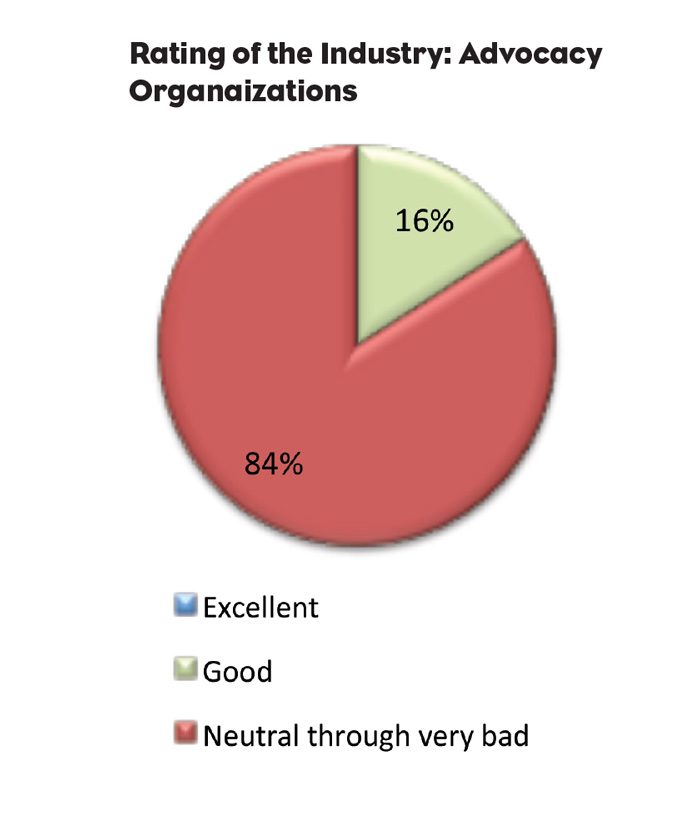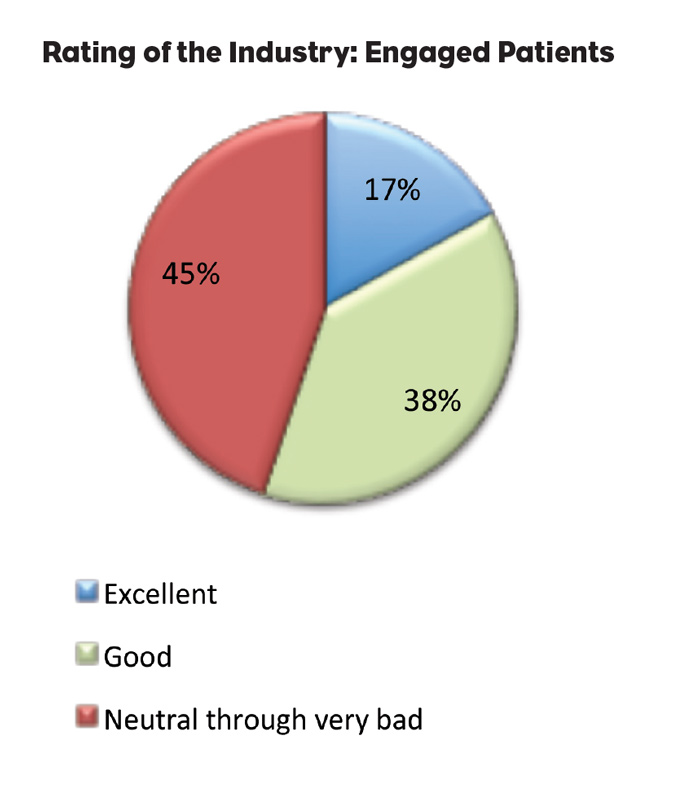Pharma’s most notorious marketing instrument is becoming blunt: According to the latest ZS AccessMonitor, a majority of physicians now don’t want to see drug reps in their office. No wonder direct-to-patient communication is on the rise. But approaching patient engagement like regular consumer marketing is trying to fit a square peg in a round hole—it causes further skepticism from patients about the intentions of pharma.
Patients aren’t interested in being “marketed at.” It’s not any particular product they’re after, but support in getting and staying well. Pharma plays a crucial part in achieving healthcare goals, but the perception is different. When people never experience the kind of value they can get from talking with pharma, they also never see what they really miss out on. So to some extent, we need to get away from selling people on products and start selling them on how healthcare can be better when we all learn from one another.
Ask Not What Patients Can Do for Your Brand…
The main thing to understand is that good marketing never just pushes a certain brand-centric agenda. That’s against best practice in any context, but most damaging in healthcare. Rather, good marketing can be described as “cooking what your guests like to eat.” Our own activities will never guide what patients need, so we should let patient needs guide our activities—not just because we’re good people (that too), but because we’re good businesspeople. The numbers speak for themselves.
Snow Companies has conducted a survey among 296 participants in Patient Ambassador programs. 246 identified as patients, 31 as care partners and 19 were “others,” such as social workers. These are people who have had the opportunity to engage with life science partners on a different level. The programs they participate in offer avenues for a two-way dialogue. On the patient side, people learn about the science of their condition, how to become more effective advocates for themselves, and how to stay motivated to support their doctors in treatment efforts.
On the industry side, companies get an opportunity to improve processes to better suit patient needs and make their business more relevant in the healthcare mix. Comparing the numbers of this survey, in which patients experienced a collaborative effort, to those that have been conducted with those parts of the patient community that have not been included in such genuine industry outreach shows just how staggering the payoff is when taking patient engagement seriously.
…Ask What Your Brand Can Do for Patients
For instance, one thing that concerns the industry is the negative reputation it often receives—and not always deserves. It is common knowledge that in a somewhat perverse way, pharma often rates within the reputational range of banking, tobacco and insurance. As insiders, we know that only part of this problem is homemade, and a lot of it has to do with the nature of the business and the regulatory and economic environment we operate in. Outsiders, however, will attribute all that’s broken in pharma to pharma itself, so unsurprisingly, studies like the one conducted by PatientView in 2015 find that zero percent give pharma an “excellent” and only 16% a “good” reputation rating. The rest is neutral or negative.
By contrast, within the engaged patient population, we’ve found 17% “excellent,” 38% “good,” and another 38% “neutral.” That’s a majority who think pharma as an industry is actually not all that bad. A majority are able to adjust its impression of the whole industry based on one single company’s efforts to do right by them. If we drill down a little more and look at these patients’ opinion of the one company that has been able to sway them, you get 56% “excellent,” 34% “good,” and 8% “neutral.” So in sum, we can say that patient programs done right are good for patients (that’s a given), good for the industry overall, and particularly good for the company that invests in it.
Translating Engagement into Real-world Benefits
This has real-world benefits, and not just in terms of reputation. The Word Health Organization (WHO) estimates that over a six-month period, half of patients on long-term treatment drop out. The consequence: $300 billion in economic damage in the United States alone, including unfilled prescriptions, avoidable hospital readmissions and emergencies, and days lost at work. The silver lining can be found in the engaged patient population, in which adherence rates are not in the 50-50 neighborhood but, according to the Snow survey, 93%.
The reasons for non-adherence are highly individual. Adherence correlates with factors such as marital status, level of education and income. As pharma companies, we can address some of these issues, for instance, by removing access barriers through co-pay assistance programs. We can also support a patient’s understanding, recall, and motivation through highly effective patient storytelling programs.
Usefulness of Pharma-patient Engagement
When asking patients to rank the kinds of outreach they find most useful, live story sharing and co-pay assistance get most of the votes, whereas DTC commercials and package inserts are ranked last. However, even the PI as the worst performer is attributed at least potential usefulness by a very comfortable majority (71%) of engaged patients. So really, it is not true that patients hate everything that comes from pharma. Honest, helpful engagement that shows a true commitment to improving patients’ lives is always welcome.
It’s not about whether or not patients want to engage with pharma, it’s about how pharma demonstrates a willingness to do more than promote products. When the patient community gets its share of the bargain out of the engagement, everyone wins. It’s the first step in fixing the things that outsiders perceive to be broken.








